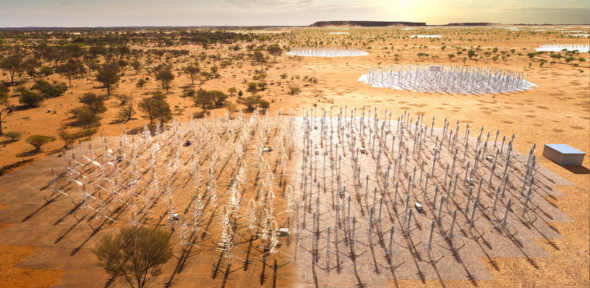
In our rapidly evolving world, where smartphones, 5G networks, Wi-Fi, and satellite communications have become integral to our daily lives, the behind-the-scenes technology is often overlooked. One project, the Square Kilometre Array (SKA), is making waves not just in unlocking the secrets of the universe but is also enabling the development of advanced wireless communications used in these everyday technologies and products.
The Square Kilometre Array (SKA) is a global initiative that is creating a telescope with the ability to observe a vast range of frequencies. It comprises of hundreds of dishes and thousands of antennas and is designed to explore the unknown frontiers of astrophysics and cosmology, probing into areas like the formation and evolution of galaxies, fundamental physics in extreme environments and the origins of life.
However, its impact goes beyond solving the secrets of the universe. SKA's influence extends into the development of innovative products like Fast Antenna Simulation Tool (FAST) that promises to reshape wireless communications.
Wireless technologies, such as cellular communications, Wi-Fi systems, satellite communications, medical instrumentation, and radars in cars and airplanes, have become essential to our daily routines. All wireless technologies require antennas. Antennas are crucial components in wireless communication systems, acting as the bridge between electronic circuitry and the surrounding environment. Their primary function is to transmit and receive electromagnetic waves, enabling wireless communication among devices. And simulation makes it easy to understand and predict antenna performance. While simulating individual antennas or small arrays is well within the capabilities of existing commercial simulators, the increased sensitivity and complexity of modern radiocommunication systems demand more efficient and accurate simulation techniques to assist during the design and commissioning phases of a project.
Radiating systems becoming larger and more complex means that, in some circumstances, simulations cannot be performed in reasonable times with general-purpose commercial solvers. “Imagine designing a system with dozens, hundreds, or even thousands of antennas. Traditional simulations could take hours to days to complete, given their limitations in handling such large-scale projects. However, FAST changes the game by performing the same task four orders of magnitude quicker - in seconds to minutes. This means engineers can optimize their designs at a much faster pace, enabling a more efficient product development process,” says Dr. Eloy de Lera Acedo, Associate professor at the Cavendish Laboratory.
The magic behind FAST lies in its advanced algorithms, developed by Dr. Quentin Gueuning, a postdoctoral research associate at the Cavendish Laboratory, and Dr de Lera Acedo. This work, refined over a decade with Prof. Christophe Craeye at the Université catholique de Louvain in Belgium, is now being brought into the commercial arena by Cambridge Electromagnetic Technology Limited (CEMTL). Founded in 2019, CEMTL is a spin off commercial company from the Cavendish Laboratory at the University of Cambridge
“Our expertise is rooted in a decade of technological advancements for the SKA telescope. Our mission is to bring this technology into the commercial arena, providing high-performance antenna systems to meet the growing demand for electromagnetic technology,” says Dr Andrew Faulkner, CEMTL Co-founder.
Beyond FAST, CEMTL offers a range of hardware and software-based products and services, impacting not only radio cosmology but also reaching the farthest corners of our planet. One notable example is the SKALA2 aerials, commercialised by CEMTL, which have found applications in the South Pole for the PeV-Radio project, studying energetic cosmic particles. This success showcases the versatility and impact of products emerging from SKA-related research.
Recognising the efforts of Cavendish researchers at CEMTL, they have been honoured with consecutive STFC Impact Acceleration Awards. These awards support the exploration of commercialisation opportunities and the development of marketing strategies for electromagnetic simulation services and tools.
Based in the technological hub of Cambridge, CEMTL is poised to usher in a new era of innovation and efficiency in wireless communications. “As we stand at the intersection of space exploration and technological progress, the collaboration between SKA and CEMTL is proving to be a catalyst for positive change,” adds de Lera Acedo, CEMTL Co-founder.
So, the next time you enjoy the speed of your Wi-Fi or marvel at the advancements in wireless technology, remember that it might just be the ripple effect of unlocking the secrets of the universe with projects like SKA. “The stars above are not just distant lights; they might be guiding us towards a future filled with unprecedented technological marvels,” concludes de Lera Acedo.
Image: A composite image of the SKA-Low telescope, blending the existing AAVS2.0 prototype station in Western Australia with an artist's impression of the future SKA-Low stations. Credit: SKAO
